The dangers of nuclear weapons continues to pop up in the Toho monster movies but in 1961’s Mothra it’s not nuclear testing that creates or even wakes up the titular monster, instead this time out nuclear fallout is just an element that appears at the beginning of the film and is quickly forgotten. The movie opens with a typhoon sinking a ship off the shores of Infant Island, an area that greatly concerns the captain as it’s where many atomic bombs have been test detonated, but when four survivors are found alive and well on Infant Island with no ill effects from radiation poisoning, questions of how this is possible arise. The survivors reveal that their lack of radiation sickness must be due to the red juice that the local natives gave them to drink, and this of course raises even more questions as apparently no one knew that there were inhabitants on the island. I guess military surveying before detonating an atomic bomb was rather lax back in the day.
“Yeah, this island is looks perfect for some nuclear testing.”
The Japanese government unable or unwilling to fund a scientific expedition to Infant Island end up co-sponsoring a joint venture with the Rolisican Embassy (Note: Rolisica is widely interpreted as a stand-in for both the United States and the Soviet Union with the New Kirk City looking very American while the military uniforms look closer to those worn by the Russians.) With the Rolisican Embassy providing the cash this allows them to put entrepreneur and evil capitalist Clark Nelson (Jerry Itô) in charge, much to the dismay of Japanese linguist/anthropologist professor Shin'ichi Chūjō (Hiroshi Koizumi) who is infuriated when he learns that all his research is to be first passed through Nelson.I don’t think Clark Nelson is a man of science.
Professor Chūjō isn’t alone in his disdain for Nelson and he is helped along by tenacious reported Zenichiro Fukuda (Furanki Sakai) and his faithful and beautiful photographer Michi Hanamura (KyokoKagawa) who do their best to thwart Nelson’s evil machinations (Note: The formula of this heroic trio is almost exactly duplicated later in Mothra vs. Godzilla), and Fukuda is even able to stowaway aboard the expedition's ship to further get in Nelson’s way. It’s when Chūjō is almost eaten by a vampire plant, while exploring Infant Island off on his own, that things start taking a bizarre turn as he is saved by two young women only twelve inches tall (Emi and Yumi Itō). These are the "Shobijin" (small beauties) who are basically the priestesses of Infant Island and the summoners of Mothra. The actresses playing the fairies are real life twins who were a very popular music act called The Peanuts, and for non-professional actors these two are pretty amazing.The twin fairies of Infant Island.
Chūjō’s claims of being saved by tiny women are at first chocked up to shock but when the scientist eventually see the fairies for themselves they are all awestruck, unfortunately this is when Nelson reveals his true reason for being on the island, which is to get an attraction for one of his theatrical shows, and he tries to snatch the fairies. Not so fast evil dude, just before he can make off with the fairies the local natives finally make an appearance and put a kibosh on the kidnapping. This of course doesn’t stop Nelson from returning to the island with a group of henchmen, gunning down several of the locals that get in the way, abducting the fairies and bringing them to Tokyo. If a showman travelling to a mysterious South Pacific island to bring back an attraction, one that will lead to city wide destruction, seems a tad familiar that’s because this was basically a Japanese version of King Kong, only this time out director Ishirô Honda was shooting for a less tragic tale. In all the previous kaiju films from Toho they each ended with the monsters being destroyed but in this film as Mothra is not technically the villain of the piece she is allowed to live. The theme of greed and exploitation is not subtle here but this actually ads to the fun as Fukuda, Michi and Professor Chūjō try and rescue the twin fairies, being hampered by the political influence that Rolisica has with the Japanese government, and the final revelation that fairies may look helpless but they have a very big guardian.And she’s heading straight for Tokyo.
My favorite element of this movies is the attitude of the captured fairies, they are saddened at being locked in a gilded cage but you quickly get the idea that they are actually not so much concerned with their own fate but that of the people of Japan, for they know what untold damage will be caused when Mothra arrives. They are quite confident they will be rescued so their desire to be freed quickly is only to minimize the destruction when Mothra reaches shore and not for their own personal safety or comfort. That Carson is forcing the fairies to sing, not realizing that the song they are performing is a call for Mothra, is particularly brilliant. My one question is “How do audiences members enjoy the act when the performers are only a few inches high?” Sure the singing is amazing but Nelson doesn’t even provide big screens for those not in the first row."Ladies and gentlemen I bring you the 9th Wonder of the World!"
That the Japanese authorities turn a blind eye to what is basically forced imprisonment and slavery is really odd and a complete indictment of political corruption, and for some reason Nelson allows our heroes an unsupervised visit with the fairies who are then told by the twins about Mothra, “She will come to rescue us, regardless of what happens to your country, and that fills us with great sadness.” Yet this threat isn’t enough to get the government to grow a spine and stand up to the Rolisica Embassy, even after Mothra in larva form destroys an ocean liner while on route to Japan. In an interesting twist our heroes provide Nelson with a box that can block the fairies telepathic call to Mothra, being more concerned with the potential loss of life if Mothra is led straight into the heart of Tokyo than the freedom of the fairies. You really don’t expect these kinds of moral dilemmas in a giant monster movie. Of course this plan proves less than effective and it’s only after a failed attempt at bombing Mothra at sea, and she comes ashore and destroys a damn, do the authorities race to free the fairies. Unfortunately it’s too little too late as Nelson, worried about losing his cash cow, flees back to his Rolisica with the fairies.Mothra doesn’t even stop to ask for directions.
The destruction as Mothra tears across Japan is wonderfully executed, once again the miniature cityscapes are great and the design of Mothra is as unique as it is spectacular, who would have even thought to make a monster movie based on a giant larva that charges across the South Pacific to save twin fairies? The one thing that could have used some work was the stand ins for people as though the miniature buildings and tanks all looked quite good some shots dwelled too long on the toy people in them, those static little figures really kill the illusion. On the plus side this movie introduces the “Atomic Heat Cannons” that were the precursors to the “Maser Cannon” that would become a staple in the battles between kaiju and the military for years to come.Atomic Heat Cannons seen here attacking Mothra’s cocoon.
Of course the real devastation doesn’t happen until Mothra emerges from her cocoon and her mighty wings unfurl to unleash death and destruction in an unparalleled display of force as vehicles and even building are sent flying. Where before in larva form Mothra seemed indestructible to the weapons of man here in her final moth/butterfly form the military are barely able to function. This spurs the populace into action in the hunting down of Nelson and the returning of the twin fairies.Mothra in all her glory.
As mentioned earlier this is the first of the Toho films that doesn’t end with the creature's destruction instead Chūjō spots a church cross backlit by the sun, which is a key hieroglyph he recognizes from the Infant Island native's written language, and that with the radiant cross-shaped star it translates as Mothra. Our heroes spur the authorities of New Kirk City to paint the symbol on the runway of the local airport, while also having all the local churches ring out their steeple bells at 3:00 o’clock as the sound of them may mimic the song the twins sing. This works and Mothra arrives at the airport to pick up the fairies who bid “Sayonara” as they fly back to Infant Island. So in this movie the “monster” is neither killed in a fight with another monster nor is it defeated by the military, instead our lead characters figure out a way to end the dispute peacefully.Note: Also an interesting change is that Nelson is killed by police, while trying to flee the mob who want the fairies returned so their city will be spared, where as in the original draft it was Mothra who killed him.
Mothra is a fascinating entry into the franchise as not only does the titular creature cause quite a lot of damage with the death toll of innocent victims being pretty damn high, yet this never once stops her from being a sympathetic character, much as the original King Kong was. Mothra will continue to be a guardian of Infant Island as the series progresses but her role of protector will often times expand to save the world from many other monstrous threats which cements her as one of the few truly heroic kaiju despite the amount of human deaths that can be laid at her wings.
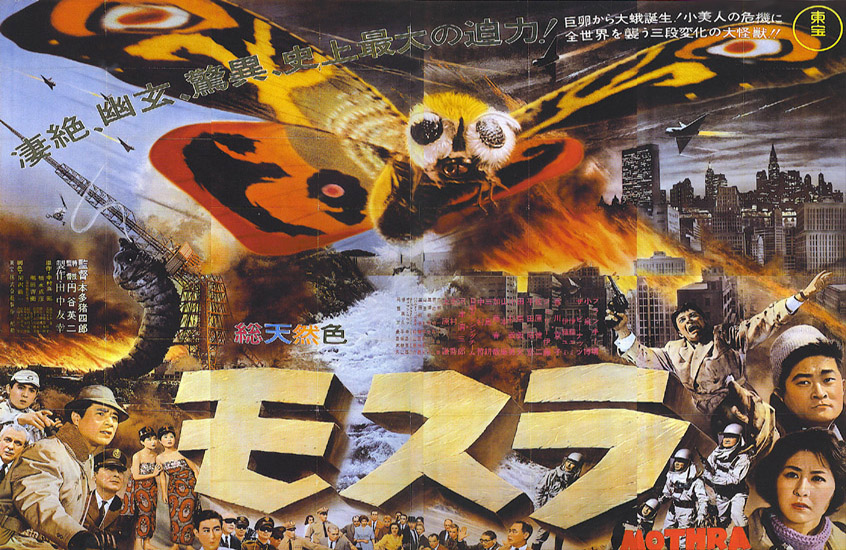
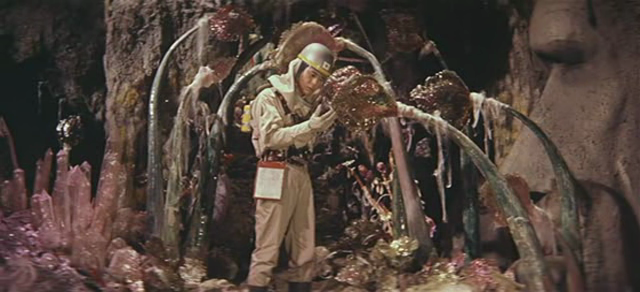
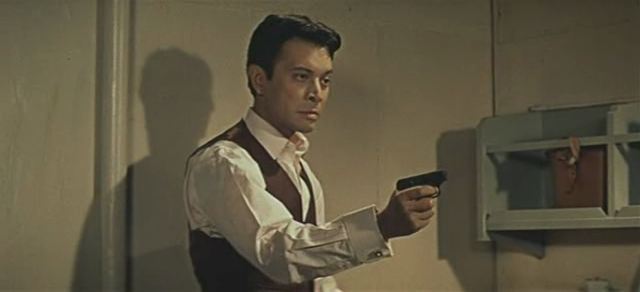
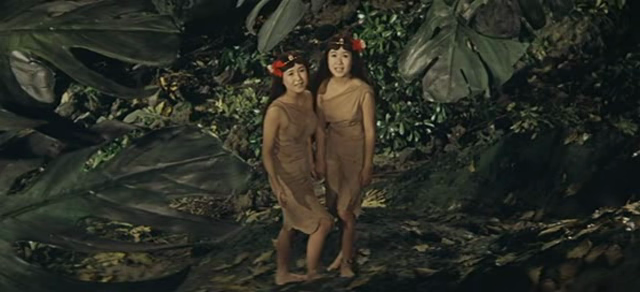

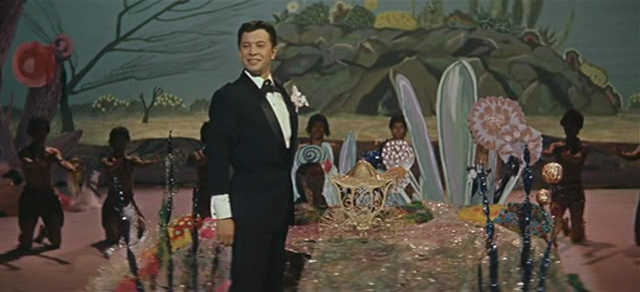
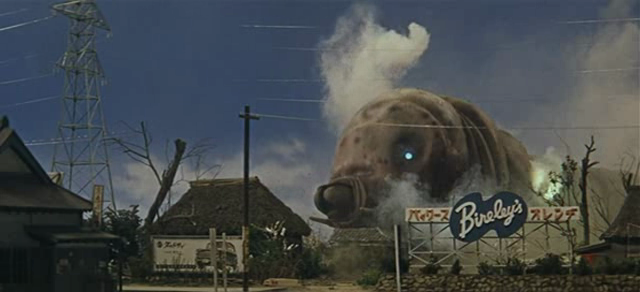
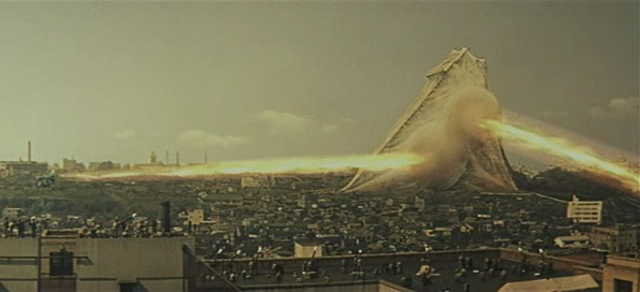


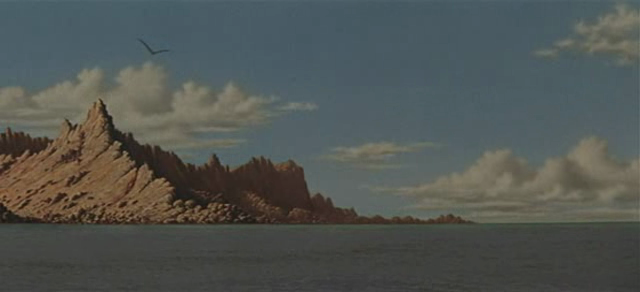

No comments:
Post a Comment